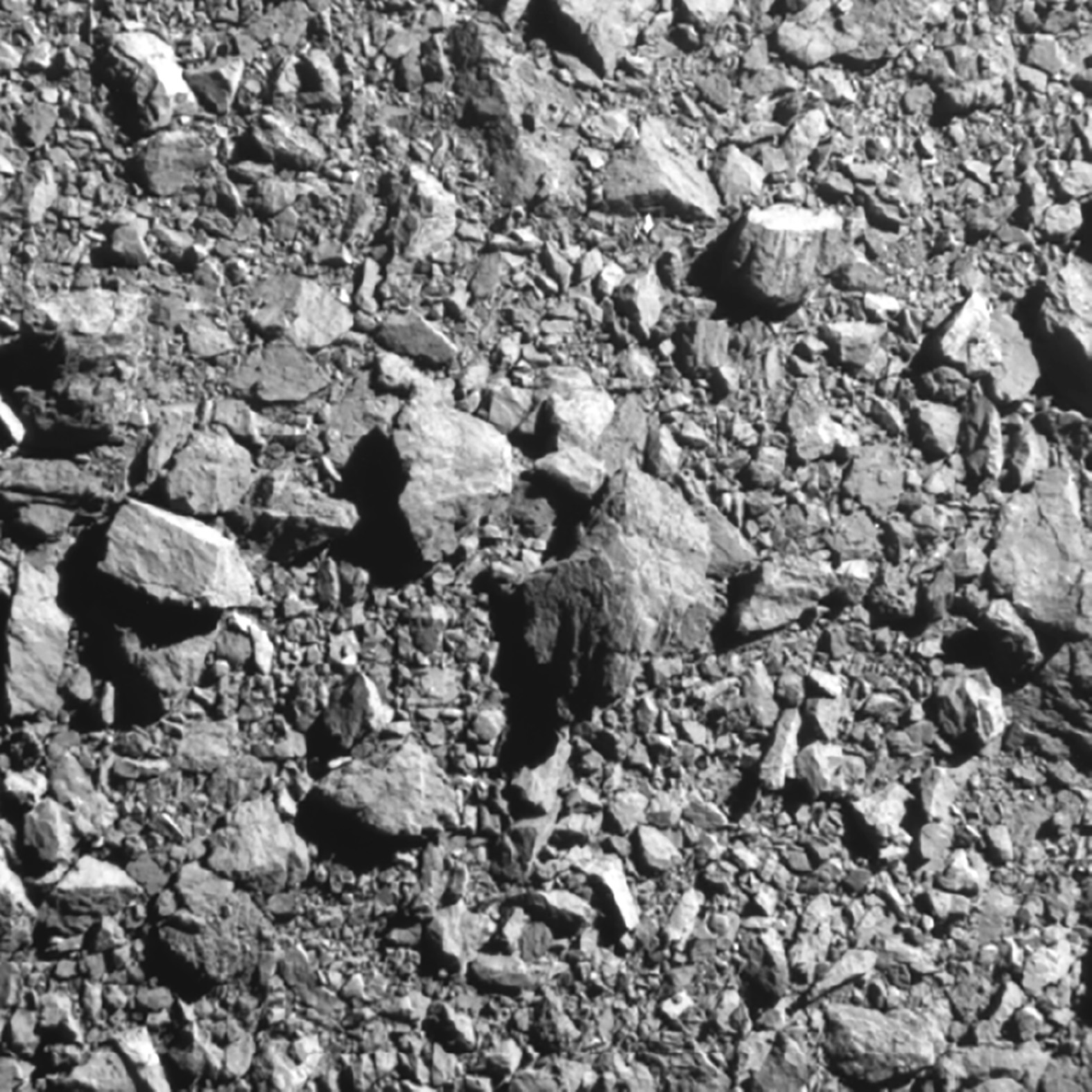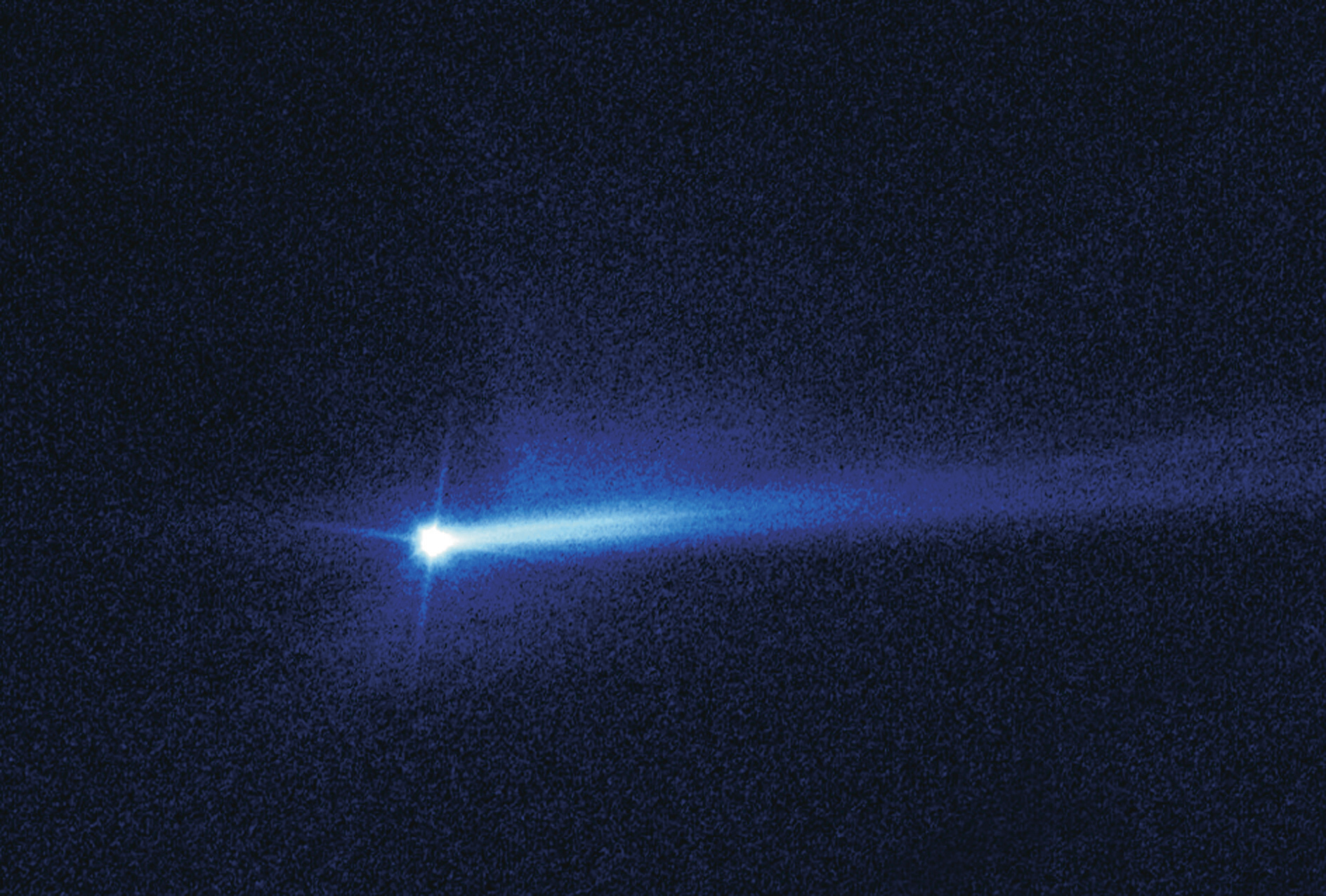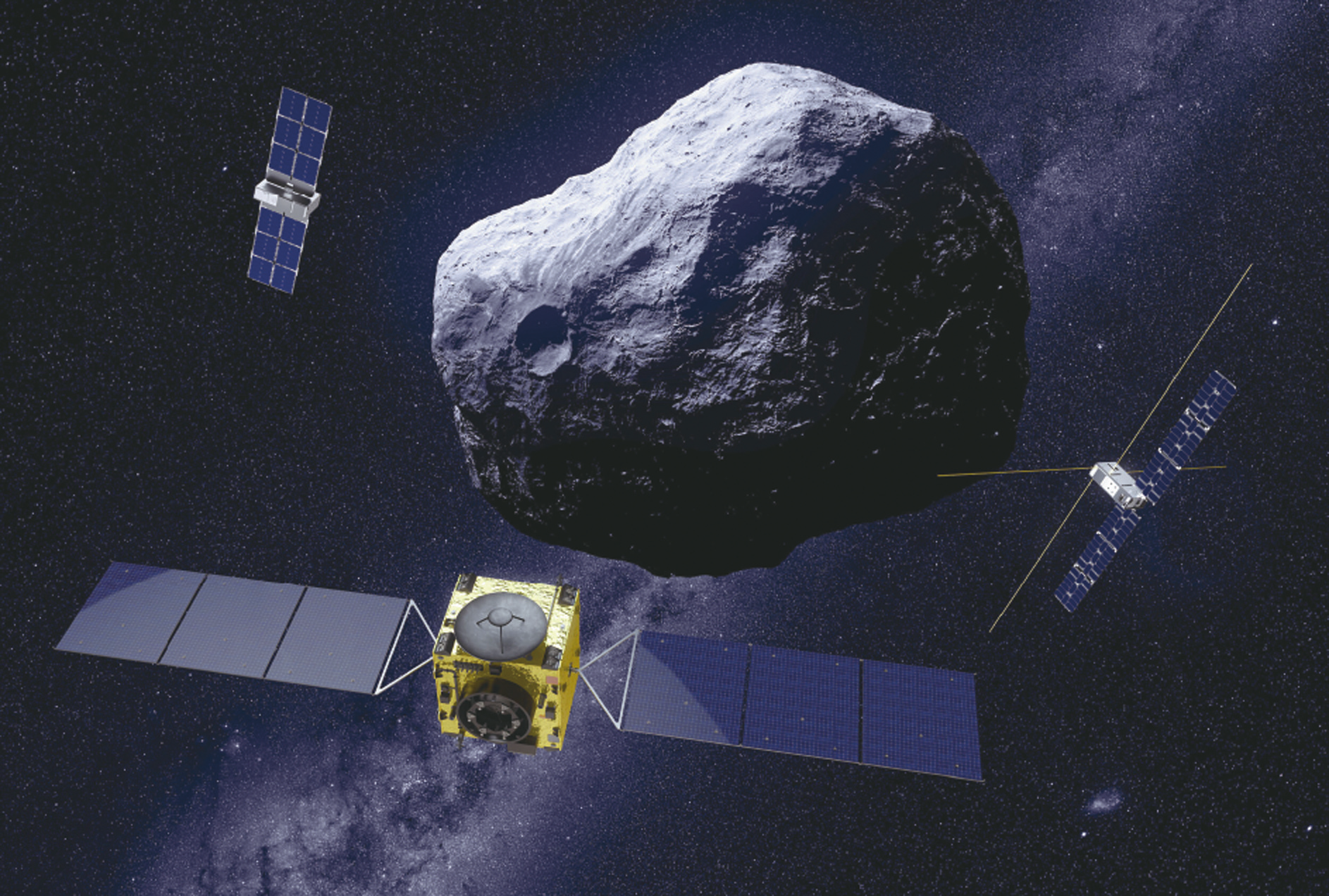Humans have for the first time proved that they can change the path of a massive rock hurtling through space. A spacecraft launched by the US National Aeronautics and Space Administration (NASA) smashed into an asteroid on September 26, 2022, successfully altering the space rock’s orbit around another asteroid by more than the nominal amount scientists had predicted. While neither asteroid was a threat to Earth, the agency tested the maneuver to prove that humanity could, in principle, deflect a worrisome space rock heading on a collision course toward the planet [1].
The US Near Earth Object (NEO) Observations Program defines ‘‘worrisome” objects as those 140 m and larger in size. ‘‘These are what we call potentially hazardous—asteroids that will not inflict global devastation but will take out a region,” said Alan Fitzsimmons, professor of astronomy at Queen’s University Belfast in Northern Ireland. While none of the objects of this size tracked by NASA are projected to hit Earth in the next 100 years, more than half of the estimated 25 000 such objects in the 140 m plus range have yet to be identified [2].
The goal of NASA’s 570 kg, roughly 2 m3 double asteroid redirection test (DART) spacecraft was to ‘nudge’ the 160 m asteroid moonlet Dimorphos closer to its partner, the 780 m Didymos, shortening the smaller object’s orbit around its companion by 5– 10 min [3] (Fig. 1). Researchers analyzing the asteroids weeks after the 6.6 km·s–1 impact confirmed that DART had cut Dimorphos’s orbital period by around 33 min [1].
《Fig. 1》

Fig. 1. An artist’s illustration of DART in the moment before it slammed into Dimorphos. Credit: NASA/Johns Hopkins Applied Physics Laboratory (APL) (public domain).
‘‘DART has shown us spectacularly that this is a viable technology for planetary defense,” said Fitzsimmons, who is assisting with follow-up measurements using ground-based telescopes as part of the Asteroid Terrestrial-impact Last Alert System (ATLAS) project at the University of Hawaii in Honolulu, HI, USA. ‘‘It cannot be underplayed that before DART we were in a world of uncertainty. Now we know what happens, and we can calibrate all our predictions back to the DART impact.”
Launched in November 2021, the DART spacecraft, constructed for 330 million USD primarily by engineers at the Johns Hopkins University Applied Physics Laboratory (APL) in Laurel, MD, USA, travelled ten months to approach the Didymos/Dimorphos pair. Then, roughly four hours prior to impact, DART activated a pioneering algorithm called Small-body Maneuvering Autonomous Real Time Navigation (SMART Nav). This autonomous optical navigation system—essentially a set of repurposed onboard missile guidance algorithms developed at APL—identified and distinguished between the two bodies and then directed the spacecraft toward Dimorphos [2] (Fig. 2).
《Fig. 2》

Fig. 2. The last complete image of asteroid moonlet Dimorphos, taken by the DART spacecraft about 12 km from the asteroid and 2 s before impact. The image shows a patch of the asteroid that is 31 m across. Credit: NASA/Johns Hopkins APL (public domain).
While the asteroid pair are too far away—nearly 1.1 × 107 km from Earth—for ground-based telescopes to have observed Dimorphos directly, researchers operating about a dozen telescopes around the world measured dips in brightness that occurred as the moonlet cycled in front of and behind Didymos. Comparing these observations with measurements of pre-collision orbital times helped quantify DART’s effectiveness [1].
In addition, a pair of radar facilities—Goldstone Observatory in Fort Irwin, CA, USA, and Green Bank Observatory in Green Bank, WV, USA—turned their dishes towards the asteroid pair to monitor the collision and its aftermath. Unlike optical telescope data, radar observations can discern the two asteroids as distinct objects, allowing astronomers to view their respective positions and derive an additional estimate of Dimorphos’s new orbital period around Didymos [1]. Both sets of measurements confirmed that DART knocked Dimorphos tens of meters closer to its companion and cut its orbital period by 33 min to around 11 h and 23 min [1]. APL scientists later estimated the energy released by the impact was about 1.1 × 1010 J, roughly three times that of detonating nearly a tonne of TNT on Earth [4].
Providing the clearest, up-close picture of what happened was the Light Italian CubeSat for Imaging of Asteroids (LICIACube), a shoebox-size Italian spacecraft (a nanosatellite or ‘‘CubeSat”) that flew along with DART and photographed the impact. LICIACube, Italy’s first deep-space mission, deployed from DART 15 days prior to impact and used an autonomous guiding technique to keep its cameras locked on Dimorphos as it sailed past the site of the crash, just 55 km from the asteroid. It used two cameras—a black-andwhite, high-resolution one named LICIACube Explorer Imaging for Asteroid (LEIA) and a wide-field, three-color one named LICIACube Unit Key Explorer (LUKE)—to photograph Dimorphos before and after the crash. The pictures show a dramatic brightening at the time of impact, then a plume of rocks and other debris expanding and drifting outwards in the minutes that followed [5].
Scientists estimated that the earliest ejecta streamed off the surface of Dimorphos at up to 2 km·s–1 . Within an hour, the cloud was as big as the Earth. In addition, a trail of debris arose from the side of the asteroid opposite the crash site, moving out in the same direction as DART—one expert speculated that this could have resulted from the spacecraft’s impact creating a wave that travelled right through the moonlet, blasting rubble off its far side [6]. Overall, DART displaced an estimated 1000 tonnes of rock into space [7].
Scientists hope that studying the plume’s evolution will shed light on the physical properties of Dimorphos as well as give researchers the opportunity to calculate how much of DART’s kinetic energy went into ejecting debris from Dimorphos, and how much might have gone into altering the asteroid’s orbit. Initial studies suggest DART’s outsized success resulted from Dimorphos being more a loose aggregate of rocks than a solid monolith. NASA calculated the momentum transfer to be roughly 3.6 times greater than if the asteroid had simply absorbed the spacecraft and produced no ejecta at all, indicating the debris plume, which produced a tail thousands of kilometers long (Fig. 3), altered Dimorphos’ orbit more than the spacecraft did [7]. Accurately predicting momentum transfer is central to planning a future kinetic impactor mission if one is ever needed, including determining the size of the impactor spacecraft and estimating the amount of lead-time necessary to ensure that a small deflection would move a potentially dangerous asteroid off its path.
《Fig. 3》

Fig. 3. The Hubble space telescope captured images of the ejected plume of dust and debris that streamed for thousands of kilometers behind Dimorphos after it was struck by DART. Credit: NASA/European Space Agency/Space Telescope Science Institute/Hubble (public domain).
Despite DART’s success, which earned Physics World’s 2022 Breakthrough of the Year [8], deflecting an asteroid that poses an active threat to Earth will likely take more than the golfcart-sized DART. A recent exercise conducted by NASA’s Planetary Defense Coordination Office suggested that up to 12 kinetic impactors like DART might be needed to successfully alter the course of a modestly sized asteroid away from a collision course with Earth [9].
Going forward, numerous telescopes will continue to monitor Dimorphos to determine, among other things, whether its trajectory changes further [5]. Data from the James Webb Space Telescope may also help identify its chemical composition [6]. ‘‘So far, we believe the composition of Didymos and Dimorphos are very similar to the most common meteorites seen to fall to Earth,” said Andy Rivkin, a planetary astronomer at the APL and co-lead investigator for DART. ‘‘Just by running our test with this one type of asteroid, we think we are covering three-quarters of what is out there in near-Earth space. The effect of a kinetic impactor on the rest should be calculable.”
Providing a final post-mortem to the DART mission will be the European Space Agency’s (ESA) Hera mission, which is currently slated for lift-off in October 2024. The 280 million USD spacecraft, originally scheduled to accompany DART instead of LICIACube, should reach Dimorphos in late 2026. Hera, and its two accompanying CubeSats Juventas and Milani, will estimate Dimorphos’s mass, porosity, and any residual wobbling due to its impact with DART, all of which will help better characterize the blow the spacecraft delivered (Fig. 4). In addition, Hera and its partners will use lidar to map the surfaces of Dimorphos and Didymos with great precision, deploy a thermal camera to analyze the surfaces’ chemical properties, and collect high-resolution optical images of the impact crater [10]. ‘‘It is only when Hera gets there that we will have a really clear picture of what Dimorphos looks like postimpact,” Fitzsimmons said. ‘‘We want to have a full understanding of where the energy and momentum of DART went because if, in the future, we have to do this for real, we want to be as sure as possible what is going to happen to that target after a potential impact from something like DART.”
《Fig. 4》

Fig. 4. An artist’s illustration of ESA’s Hera spacecraft and its two CubeSat companions investigating Dimorphos and the crater produced by DART’s impact. Credit: ESA (public domain).
China has plans to launch its own kinetic impactor mission in 2026 [11]. The mission, which will target the Earth-crossing, near-Earth asteroid 2020 PN1, will resemble a mashup of DART and Hera, with one module smashing into the 40 m wide space rock and another module hanging back to complete a thorough post-impact inspection.
DART is the first major project funded by NASA’s Planetary Defense program. The next major rollout for the program will be the NEO Surveyor, a 50 cm infrared space telescope that will specialize in finding both bright and dark asteroids, the most difficult types to detect [12]. Scheduled for a 2018 launch, NEO Surveyor will use two heat-sensitive infrared imaging channels to accurately measure the size and shape of up to 90% of previously unidentified near-earth asteroids, as well as their composition, rotational states, and orbits. ‘‘Hopefully we never find something that is incoming, but at least with DART we have demonstrated that we could intercept an asteroid in space and significantly change its orbit away from us,” Rivkin said.













 京公网安备 11010502051620号
京公网安备 11010502051620号




